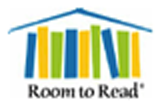Ready, set, sleep! WebMD offers tips on how to snuggle up for a quick snooze.
| By Heather Hatfield WebMD Feature |
Reviewed by Louise Chang, MD |
Napping is a proven way to clear out the cobwebs and pave the way for a more productive afternoon — whether it’s Wednesday or the weekend. In fact, in today’s hectic world, as our lives get busier and the amount of sleep we get at night gets shorter, counting sheep come midafternoon can be an important way to recharge your battery.
“The majority of Americans are sleep deprived — they aren’t getting enough nighttime sleep,” says Bill Anthony, PhD, author of The Art of Napping. “Since most people can’t rearrange their lives to get more sleep — with two jobs, child care, elder care, long commutes, whatever it happens to be — we recommend they learn how to nap.”
Experts describe to WebMD the power a “power nap” can have on your life, and offer tips on how to snuggle up for a quick snooze.
Know When to Nap
“Naps are one of the most powerful alertness strategies,” says Mark Rosekind, PhD, president and chief scientist at Alertness Solutions. “It is the only strategy that gets directly to the ‘sleep debt’ we rack up at night when we don’t get the amount we need.”
So one of the most important components of napping is knowing when to lie back and relax.
“What people should do is develop their own signs and symptoms checklist: What are the things you do when you know you are at your peak performance, and what are your individual signs and symptoms that indicate you are tired,” Rosekind tells WebMD.
For some people, it’s mood; anything sets them off. For others it’s memory; they can’t remember where they put their keys.
“You need to identify signs for you that you are off your game, and those are cues that you should use to indicate you need a nap,” says Rosekind. “When you’re not getting enough sleep, it can degrade all aspects of who you are — affect your judgment and decision making. It can reduce your reaction time, your memory, your communication skills, and these things can go down 20%-50%.”
Even NASA Likes to Nap
Napping is a good solution to achieving optimal performance. So when you’re ready to catch some ZZZs come 1 p.m. on a Thursday afternoon at work, how can you get your boss on board with you sleeping on the job? Tell her even NASA agrees with napping.
“When I was at NASA we gave the pilots a planned nap in the cockpit,” says Rosekind, who is a board member of the National Sleep Foundation. “While two pilots flew the plane, the third would have 40 minutes to nap. We found they would sleep for 26 minutes, which boosted their performance by 34% and their alertness by 54%.”
In less than a half hour, the pilots were able to increase their performance significantly, and better yet, explains Rosekind, the effects of a short nap lasted for two to three hours.
Control Your Environment
“If possible, lying flat when you’re napping is a good start,” says Rosekind. “Control the environment, which means dark and quiet, and that can either be shutting windows and doors, or potentially earplugs if needed, and sometimes a mask is good for daytime naps. Create as much comfort as you can get, give yourself enough space, control the temperature with a blanket or a pillow — [and] any other things you can do to get comfortable.”
Please click here to read the remainder of the article from WebMD.



















Posted on January 22, 2008
0